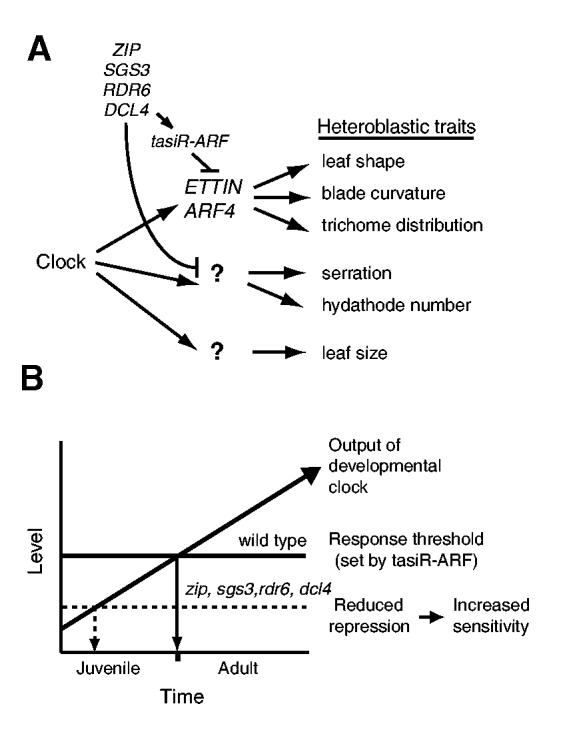Fig. 7.

A model for temporal regulation of leaf morphology. (A) Heteroblasty is regulated by the interaction between factors that change temporally during shoot development (developmental clocks) and by the pathways controlling leaf morphology. ETT and ARF4 regulate a subset of the traits associated with vegetative phase change and heteroblasty. Their expression is repressed by the tasiR-ARF, the production of which requires ZIP, SGS3, RDR6 and DCL4. Other heteroblastic traits, such as leaf serration and hydathode number, are regulated by another, as-yet-unknown, target of these four genes. (B) Expression of adult traits requires ETT and ARF4. tasiR-ARF creates a threshold for entry into the adult phase by constitutively limiting levels of ETT and ARF4 transcripts. This threshold is lowered by mutations that block tasiR-ARF production (zip, rdr6, sgs3, dcl4). The developmental clock may progress to the adult phase by promoting ETT and ARF4 translation or activity.
